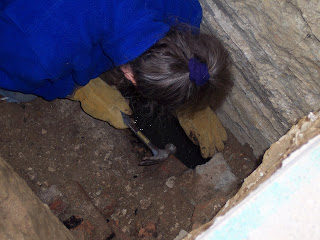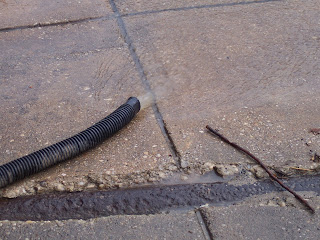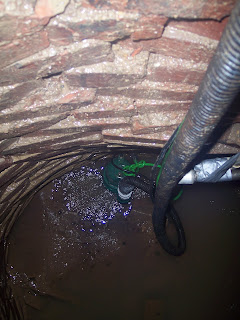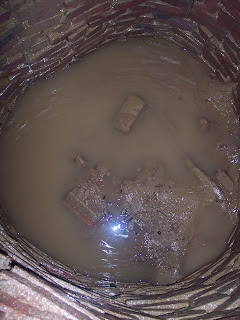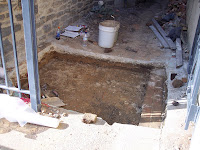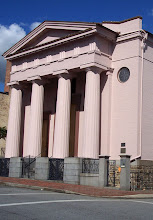On Friday, John Srygley, Preservation Architect, Esther Read and Peter Middleton, archaeologists, Michael Walkley, P.E., and Charlie Hall and Beth Schminke, representatives from
MHT, met to discuss the cistern/void recently discovered under the SE corner of the LSS. Here's what John had to say about the meeting:
"We're not sure at this time what we're looking at, i.e.., a cistern, a dry well, or ?; Esther and Garry [Stone, Architectural Historian] will be sharing their thoughts on this. From the photos the structure appears to be cylindrical, which I measured at 3'-6' in diameter. It is about 8' deep, with four feet of standing water; the walls appear to be dry laid brick. It is unclear how the LSS foundation spans the hole; presumably there is a large stone [lentel]. Note that the photos [see below] are the only visual we have at this time, since the location directly under the foundation does not currently allow enough room to fit one's head down to get a good look!
[...]
Note that the cistern may be the principal cause of the settlement and stresses at this corner, but there are several other suspected influences, and the dramatic subsidence in this area is likely a consequence of the compounded influence of several or all factors including (1) the broken sanitary line dating from @ 1900, (2) the 8" sanitary line installed about 1960, (3) that a portion of the south wall rests on fragments of the brick wall of the mikvah house."
Once we have had a chance to investigate the interior of the cistern, we will discuss the best way to proceed with the grout injection that will stabilize the SE corner of the LSS. Since the cistern appears to be dry-laid, there is a fairly good chance that the pressure grouting which had been planned will not be an option in the area around the cistern. The high pressure aspect of pressure grouting could potentially damage the cistern and the surrounding area, and as with every aspect of this project, we will not proceed until the best options have been determined and agreed upon by our various historic and preservation specialists.

The 1" x 6" hole at the bottom of the pit that led to the discovery of the cistern.



The interior of the cistern - at least as much of it as we can currently see.











